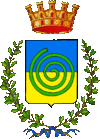Lignano
| Lignano Sabbiadoro | ||
|---|---|---|
| Comune | ||
| Città di Lignano Sabbiadoro | ||

Fountain of Viale Gorizia
|
||
|
||
| Location of Lignano Sabbiadoro in Italy | ||
| Coordinates: 45°41′N 13°07′E / 45.683°N 13.117°ECoordinates: 45°41′N 13°07′E / 45.683°N 13.117°E | ||
| Country | Italy | |
| Region | Friuli-Venezia Giulia | |
| Province / Metropolitan city | Udine (UD) | |
| Government | ||
| • Mayor | Luca Fanotto (centre: liste civiche with UdC) | |
| Area | ||
| • Total | 16.21 km2 (6.26 sq mi) | |
| Elevation | 2 m (7 ft) | |
| Population (2007) | ||
| • Total | 6,676 | |
| • Density | 410/km2 (1,100/sq mi) | |
| Demonym(s) | Lignanesi | |
| Time zone | CET (UTC+1) | |
| • Summer (DST) | CEST (UTC+2) | |
| Postal code | 33054 | |
| Dialing code | 0431 | |
| Patron saint | St. John Bosco | |
| Saint day | January 31 | |
| Website | Official website | |
Lignano Sabbiadoro (Italian: [liɲˈɲaːno sabbjaˈdɔːro]; sabbia d'oro means "golden sand" in Italian) is a town and comune within the province of Udine, in the Friuli-Venezia Giulia region of north-eastern Italy. It is one of the main summer resorts in northern Italy and on the Adriatic Sea coast.
Lignano Sabbiadoro developed in the early 20th century from some hospitality resorts, which at the beginning could be reached only by sea. The first inhabitants came in 1931, after the draining of the nearby marshes. The first road connecting Lignano with the nearby comune of Latisana was built in 1926.
The name Sabbiadoro ("Golden Sand") was added in 1935 for promotional reasons.
Formerly known as simply Lignano, it is divided into three zones, each with its own particular traits: the historic centre, rife with shops and restaurants (Lignano Sabbiadoro itself); the greener area of Lignano Pineta, with lovely gardens and lanes for strolling; and Lignano Riviera, the waterfront, rich in salty sea air and coastal pines.
During World War II, the very last operations of the German navy - involving the evacuation of troops and personnel from Istria and Trieste ahead the advancing Yugoslavs - took place here in May 1945. An estimated enemy force of 4000 landed from 26 ships of all types at the mouth of the Tagliamento River. Germans equipment included E-boats, LSTs, a small hospital ship, all types of transport, and a variety of weapons. The 21st Battalion of the New Zealand 2nd Division was outnumbered by 20 to one, but at the end, on 4 May 1945, the Germans surrendered. Lignano became an autonomous commune in 1959. Lignano lives on summertime tourism, and is home to Austrian, German, and Slovenian citizens.
The Terrazza a Mare (Italian: [terˈrattsa a ˈmaːre] terrace on the sea in English), of Lignano Sabbiadoro was designed by the architect Aldo Bernardis in 1969 and opened in 1972. It replaced the previous building designed by the architect Valle. It is considered to be one of the most important monuments of the city, housing shops, bar, and a solarium.
...
Wikipedia


